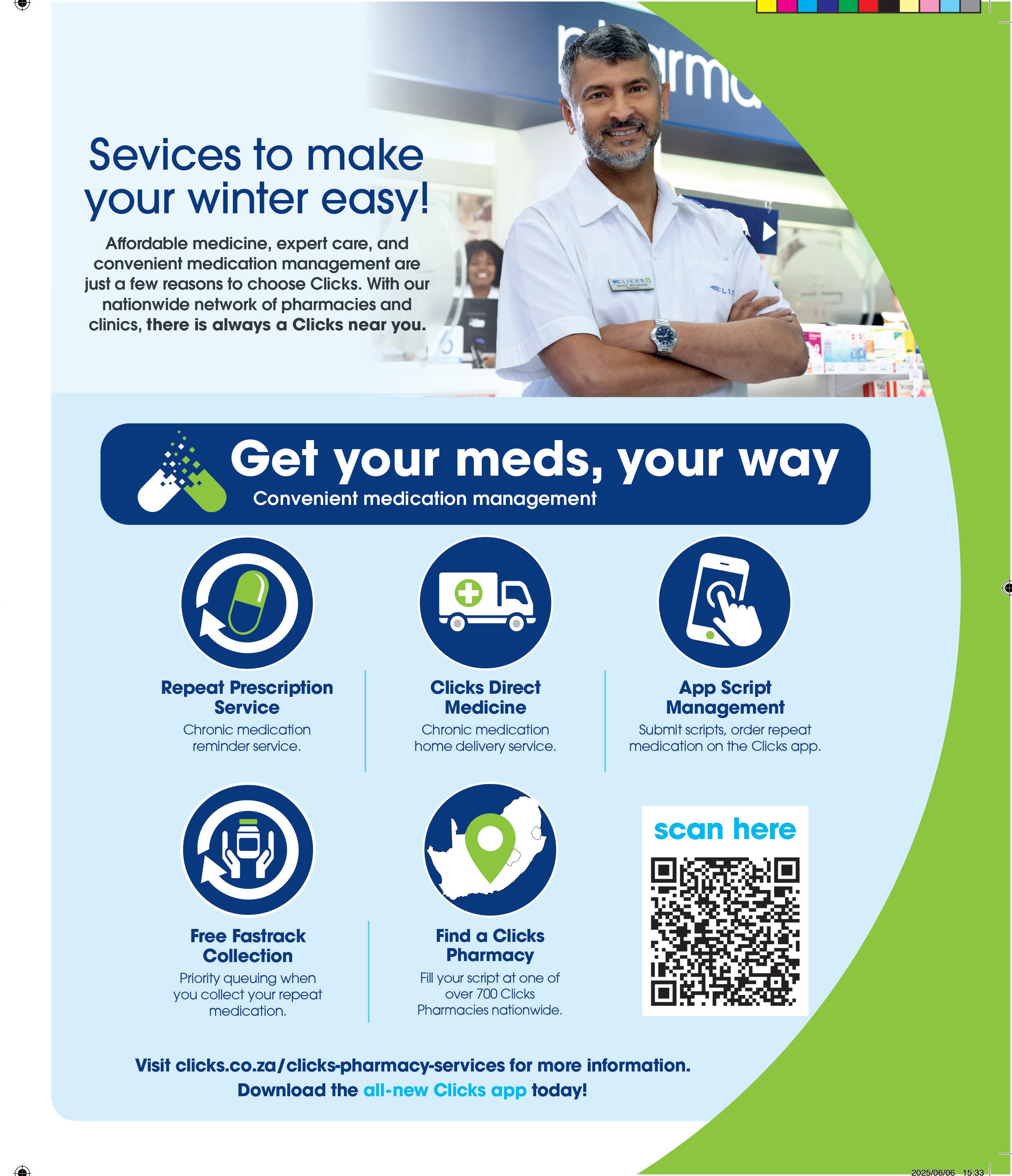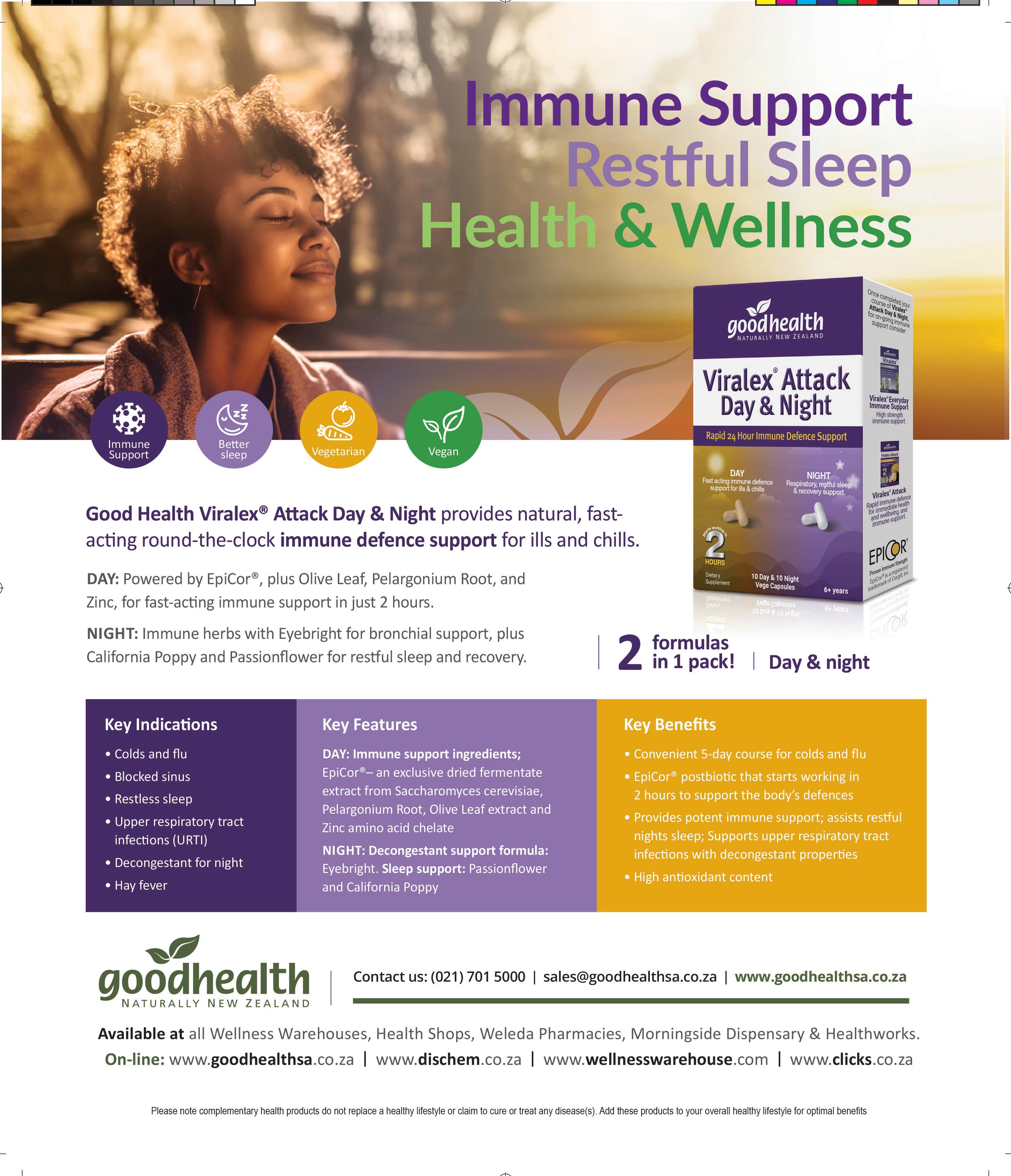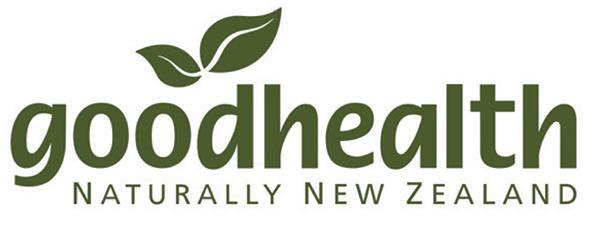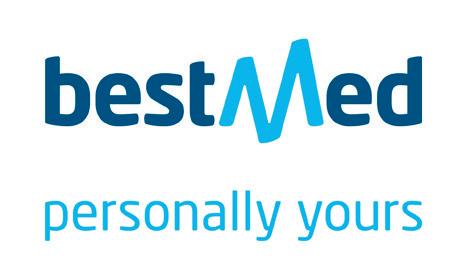






























































successful human resources leaders know that promoting a healthier, more engaged workforce enhances productivity by reducing absenteeism.
These managers prioritise wellness to attract and retain top talent, fostering a positive workplace culture. We profile three inspiring South African business leaders redefining leadership through a wellness-first lens.

Sungeetha Sewpersad is the former chief people officer of Rand Merchant Bank (RMB) and the current founder and managing director of Brainwave Consulting. Her company helps businesses align human capital strategies with organisational goals for a rapidly evolving workplace. She attributes the redefining of leadership through a wellness-first lens to COVID-19 and the entry of Gen Z (those born between 1995 and 2012) into the workplace. “COVID-19 underscored the significance of wellbeing in all its forms, while Gen Z introduced an increased emphasis on mental health awareness and holistic work-life integration. As a result, leaders and HR teams have been compelled to rethink traditional leadership models, sparking an evolution in leadership,” she observes.
Sewpersad believes “leadership today is about cultivating empathy, understanding behavioural cues, ensuring fair working conditions and recognising the broader impact of an employee’s lived experience beyond the confines of a nine-to-five job.”
“Leadership today is about cultivating empathy, understanding behavioural cues, ensuring fair working conditions and recognising the broader impact of an employee’s lived experience beyond the confines of a nine-to-five job.” –Sungeetha Sewpersad
According to Sewpersad, it’s time to reimagine the workplace because rigid hierarchies and outdated micromanagement tactics should no longer define it. “We have ushered in a new era that values autonomy, work-life balance, environmental consciousness and meaningful work. This shift has influenced even older generations, fostering a more dynamic, efficient and technology-driven work environment.”
Forward-thinking HR leaders are placing employee wellbeing at the centre of business success, redefining leadership for a healthier workforce, writes Busani Moyo
Norah Sehunoe is the executive head of human capital at Santam Insurance. “At Santam, we believe wellbeing isn’t just a progrmme: it’s a promise,” she declares. “A promise that says to every employee: ‘You matter, your story matters, and you don’t have to leave who you are at the door.’ This is captured in a key pillar of our people promise: Come as you are.”

Sehunoe reports that her organisation believes in a holistic and human-centred approach to wellbeing, “spanning physical, mental, emotional, financial and social wellness”. The reason for this approach is clear: “When people feel safe, seen and supported, they do their best work. As wellbeing doesn’t end at the office door, our support extends to employees’ families, recognising that wellbeing is interconnected and deeply personal.”
Regarding the role of leaders, Sehunoe says Santam acknowledges that “wellbeing doesn’t happen by chance—we know that it’s led from the top.” She adds: “At Santam, we see leaders as custodians of culture. We believe in the saying, ‘people do not leave companies; they leave their managers’. That’s why we intentionally equip them to live, lead and serve in ways that foster psychologically safe, inclusive and caring environments.”

Karen Johnson is the head of Vitality Strategic Programmes and Vitality Wellness at Discovery Limited. She says the organisation’s wellness strategy is based on the acknowledgement that “most health issues stem from noncoommunicable diseases”, often caused by lifestyle choices related to four lifestyle behaviours: poor nutrition, physical inactivity, smoking and alcohol misuse. “This is where corporate leaders can significantly impact health by promoting awareness and encouraging healthy lifestyles.”
Johnson suggests a three-pronged approach to employee wellness. The first involves applying health behaviours by “prioritising exercise, healthy eating, stress management and mental health”. The second involves creating “opportunities for screening and wellness activities for employees”. Finally, she says leaders must “cultivate a culture of genuine care for employee wellbeing.”














As the world faces a mental health crisis, South African companies are tackling the stigma around anxiety and depression in the workplace with a range of interventions. But are these effective, asks Glynis Horning












lobally, around 15 per cent of the working-age population suffers from a mental disorder, and about 12 billion working days are lost each year to depression and anxiety, at a cost of $1-trillion per year in lost productivity, according to the World Health Organization (WHO). The WHO predicts that by 2030, mental health will be the single biggest global crisis.
The vast majority of the workforce are now Gen Z and millennials, and they are especially affected, with research by Deloitte showing that 35–40 per cent feel stressed or anxious all or most of the time, and nearly half have workplace burnout. This is reinforced by the Sapien Labs Mental State of the World Report released this year, which highlights a “sharp decline in the mind health and wellbeing of each younger generation”. “Younger generations face increasing challenges of cognitive and social functions, such as planning and focus, emotional regulation and social interactions, at rates four to five times higher than older adults,” it notes. Smartphone use, social disconnection, ultra-processed food consumption and environmental toxins are identified as major contributors to their declining mind health and wellbeing.
The World Economic Forum has sounded a call for urgent action on mental health: “With work being so central to people’s lives and sense of identity, businesses have a responsibility to provide working environments that enable current and future generations of employees to thrive and adapt to a fast-changing world”. Many South African companies are responding by addressing the stigma around mental health in the workplace and introducing support systems.
“We are invited to run mental health presentations and workshops with employers and employees, and by far the most requested
To support employees with mental health problems, the SAFMH advocates for “reasonable accommodations” in the workplace.
workshop is on mental health and stress in the workplace,” says Leon de Beer, deputy director of the South African Federation for Mental Health (SAFMH). Work-related stress, he explains, is “when we are faced with work pressures that don’t match our knowledge and abilities and that challenge our ability to cope”.

The SAFMH advises organising regular one-to-one meetings and catch-ups to ask employees how they are coping. “This also helps build trust and gives employees a chance to raise problems early,” he says. Other recommendations include a zero-tolerance policy for bullying and harassment, and opportunities for employees to exercise control, ownership and choice in their work.
To support employees with mental health problems, the SAFMH advocates for “reasonable accommodations” in the workplace. This refers to “necessary and appropriate adjustments and modifications in the workplace to ensure all persons with disabilities (including mental disabilities) can exercise and enjoy all their freedoms and human rights, as guaranteed by the UN Convention on the Rights of Persons with Disabilities”. Examples of accommodations for persons with mental health conditions can include flexible hours, extra time for tasks and regular supervisory meetings, says de Beer. “Managers can also

work with these members of staff to develop a personal action plan to proactively manage their mental health.”
The need is pressing, says Lyn Labuschagne, manager: EAP & Corporate Wellness Development at the South African Depression and Anxiety Group (SADAG). Last year, SADAG conducted a ‘Working Life’ online survey, which found work was “a constant stressor for many respondents, regardless of their employment sector”. More than half of respondents (52 per cent) had been medically diagnosed with a mental health condition—32 per cent were depressed, 25 per cent clinically stressed,18 per cent generally anxious, and 13 per cent experiencing burnout.

“It emerged that managers often contact employees after hours, and having one worker doing the work of two means ongoing overtime, with 75 per cent of employees saying they were unable to ‘switch off’ after work,” she says. Among the main challenges they listed were too little remuneration, tight deadlines/time pressure, long hours, constant organisational change, insufficient leave/time off, too many meetings, and not being allowed to work independently. They asked for more time and assistance in “reducing workplace behaviours to help everyone find their ‘off’ switch”.
Measures are increasingly being introduced by South African companies to help address these issues, but how effective are they?
Provided by the likes of Meditopia, Lyra Southern Africa, Life Employee Health Solutions, Discovery Health Company and Afroteq Advisory, employee assistance programmes (EAPS) offer confidential counselling, stress management and other mental health services to employees to address concerns before they escalate into more serious conditions, and help employees access external mental health resources and professionals.
Yet the SADAG survey found while 47 per cent of employees worked in organisations where EAPS are offered, some of these “existed only on posters” and did not provide true psychosocial support services, with one overburdened workplace social worker or psychologist struggling to meet demand, reports Labuschagne. “Some employees also said they had no time to use EAP services due to constant work pressure and reduced staff complements.”
These aim to educate employees about mental health and the importance of seeking help, to break the stigma and create a more accepting, understanding workplace culture. Some companies provide training in mental health first aid to equip employees to recognise and support colleagues struggling with mental health. Signs to watch for include lack of interest in work and life, unexplained tiredness, high irritability without real reason and, for some, backache, headache, withdrawal and higher levels of accidents and mistakes.
“However, from our survey we understand that more needs to be done,” says Labuschagne. “This will also assist employers with a more productive workforce. SADAG helps companies with internal

“The organisation must take responsibility and see where the practices and policies it has in place are causing problems and how they can be fixed, before looking at wellbeing at an individual level.” – Professor Karen Milner
strategies, including dedicated toll-free helplines and tailor-made programmes available to employees twenty four hours a day, seven days a week.” (For details, email admin@anxiety.org.za).
Companies are beginning to encourage employees to talk openly about their mental health challenges to foster empathy and understanding among colleagues, and managers are encouraged to model open and supportive communication, notes de Beer. Some companies are establishing programmes to manage mental health conditions, while others are looking to improve work-life balance by introducing flexible working arrangements, encouraging employees to take breaks and implementing initiatives that recognise employee efforts and achievements to improve morale and mental wellbeing.
However, Professor Karen Milner, associate professor of psychology in the School of Human and Community Development at the University of the Witwatersrand, whose research looks at how organisations can help or hinder mental health, cautions against “band-aiding toxic culture”.
“The organisation must take responsibility and see where the practices and policies it has in place are causing problems and how they can be fixed, before looking at wellbeing at an individual level.” There is no quick fix, she concludes, “but an organisational structure that encourages communication is a good place to start”.














As burnout takes a toll on nearly 36 per cent of the South African workforce, businesses are stepping up. The shift signals a broader corporate awakening: workplace success now hinges on employee health, not just profi t margins, says Marchelle Abrahams




ome employees wear their burnout like a badge of honour; a sign of dedication and loyalty to their jobs. However, the reality is, everyone is disposable. Classified as an “occupational phenomenon” by the World Health Organization, burnout is a global issue that negatively impacts productivity and employee wellbeing. According to Gallup’s State of the Global Workplace report, about 36 per cent of the South African workforce is affected.
Daniela Thom, business development manager at Strider Digital, an outsourced talent specialist agency, notes that forecasting workplace trends in 2025 is challenging due to the events of recent years. However, she observed that many workers are highly disengaged. “Finding ways to re-engage workers is crucial right now,” says Thom. “Disengaged employees are less productive, more prone to burnout and more likely to leave their jobs. Business owners must prioritise employee wellbeing initiatives to combat this.”
She suggests creating a positive company culture, offering impactful employee benefits and providing support mechanisms. “Proactively addressing employee wellbeing is essential,” she adds.

Following the release of the report, Professor Renata Schoeman, head of healthcare leadership at Stellenbosch Business School, warned that the workplace phenomenon is not to be confused with daily stressors of everyday personal life responsibilities. Citing health economists, Investec estimates that unaddressed mental health conditions cost our economy R161-billion annually due to absenteeism, presenteeism (being at work but unwell) and premature mortality.
Professor Schoeman noted that burnout is not medically diagnosed. “If untreated, burnout can lead to mental health conditions that require medical treatment. This is not about simply taking a few weeks’ holiday or resting to overcome the constant state of depletion.”
Fortunately, South African corporates are taking note. Many are actively implementing policies and programmes that put employee health front and centre. We catch up on some of these interventions:
Nedbank began prioritising employee wellbeing in 2018, motivated by an increasingly digital workplace and growing employee stress levels. “The emphasis was placed on physical, financial and mental wellbeing, making it a core component of the bank’s human capital strategy,” says Namhla Tambatamba, Nedbank’s head of employee wellbeing.

Nedbank’s wellness agenda is enabled primarily through a comprehensive programme with Momentum, which supports employees across physical, mental and financial health. Initiatives are tailored to different business needs and are available both in person and virtually.
Nedbank also brought on Alexander Forbes to manage medical schemes, while Momentum Health Solutions oversees the employee wellbeing programme (EWP). The EWP includes executive healthcare via Health Impact, trauma support through TraumaCall, and financial coaching with Interface.

Annual on-site wellness events integrate digital wellness via the Cyber Smart team and collaborate with Occupational Health and Safety to ensure holistic health management.
Tambatamba adds that Nedbank has seen significant impacts on employee productivity, engagement and morale through its wellness initiatives. “To measure these effects, we have developed a comprehensive total wellbeing dashboard that continues to evolve.” The dashboard consolidates various data points into a matrix, providing a composite score out of 100 per cent across four dimensions: wellbeing sentiment, financial health, physical health and mental health. Each dimension is given equal weighting. “By using this dashboard, we can track and analyse the impact of our wellness initiatives on employee productivity, engagement and morale, ensuring that we continue to support our workforce effectively.”
The Shoprite Group employs more than 160 000 people. None of them, including their immediate family members, are exempt from accessing Health24/7. The scheme is the retailer’s free and confidential employee wellness programme. A spokesperson for the Shoprite Group states that the “comprehensive programme takes a proactive and holistic approach to wellbeing, supporting employees across mental, physical and financial health”.
The business is committed to investing in its people. In its annual sustainability report, Shoprite Holdings noted that 33 875 employees used its EWP services in 2024 compared to 28 106 in the previous year.
“Our third annual survey showed high satisfaction with the EWP among 286 respondents, with 94.7 per cent praising the support centre,” adds the spokesperson.
Employees are encouraged to use the EWP, “offering free, confidential counselling and advisory services to support individuals in identifying and managing challenges”.
Each worker is allowed three counselling sessions per issue, with flexibility for extension at the manager’s discretion. Regular health screenings for blood pressure, glucose, cholesterol, body mass index and HIV are rendered via the group’s Medirite pharmacies.
Additionally, a dedicated wellness website lists resources to support the physical, mental and financial wellbeing of employees and their families.

“Finding
ways to re-engage workers is crucial right now. Disengaged employees are less productive, more prone to burnout and more likely to leave their jobs. Business owners must prioritise employee wellbeing initiatives to combat this.” – Daniela Thom
Purpose-driven catering service company Empact Group hosts an employee wellness day across its regional offices. The health-focused activities reinforce the company’s beliefs that a healthy and thriving workforce is the key to long-term success. CEO Alan Quinn explains: “At Empact Group, our motto, ‘We do right by you’, extends far beyond our clients. It is a promise we make to our employees to foster a supportive environment that promotes physical, mental and emotional wellbeing.” Quinn believes the success of his business is inherently tied to the health and happiness of its staff.
Personally, Quinn is greatly invested in wellness. He led a stretching session followed by a high-energy 3km walk at last year’s event. Then there was the Blendavenda Smoothie Bike, a fun and interactive feature that saw employees blend their smoothies by pedalling a bike.
Quinn adds: “Our goal is to create an environment where employees can flourish, both personally and professionally. A healthy workforce is a productive one, and we are proud to support our employees on their wellness journey.”


Busy lifestyles mean we don’t have as much time to dedicate to self-care. When you’re not feeling at your best, or you’ve been pushing the limits, can be relied upon for help. Our premium supplements incorporate quality ingredients needed to help support our demanding lifestyles - whilst being safe and compliant with our regulatory requirements.

has been a clean-green New Zealand premium supplement brand since 1987 and is one of Australasia’s leading producers. Brand strengths are threefold:
• excellent high-strength formulations;
• using superior ingredient forms; and
• pharma-grade manufacturing compliance to strict local and international standards. Products are formulated by our naturopathic team who strongly believe in the benefits of herbs and nutraceuticals. Herbal medicine has been practised for thousands of years and today’s science enables us to prove much of “old wisdom” as factually relevant. All our hero ingredients are clinically researched, meaning product claims can be substantiated. offers exciting supplement delivery forms – such as sublingual dissolving tablets, tasty chewables, easy-mix powders and direct-to-mouth granular sachets and liquids – making regular supplement taking easier and more enjoyable.
And our production facilities are GMP certified – the international recognition of quality manufacture with highly scrutinised raw ingredients. Our facilities are run along strictly pharmaceutical protocols by pharmacists and their quality assurance teams.
As proof of product quality and success, the brand supplies growth export markets such as Australia, China, Hong Kong, Indonesia, South Africa, South Korea and Vietnam.
In 2001, the brand was launched in South Africa with our head office and distribution located in Cape Town. Health supplement importation and distribution
Our quality management team and responsible pharmacist control our regulatory compliance and product quality.
in South Africa requires approval and licensing by SAHPRA (South African Health Products Regulatory Authority), SAPC (South African Pharmacy Council) and NDOH (National Department of Health)
Our quality management team and responsible pharmacist control our regulatory compliance and product quality. Imported products are monitored during transit to South Africa and for temperature and humidity deviations while in our storage facility, ensuring what you buy in South Africa is the very same quality product manufactured in our New Zealand facility.
All products come with an attached Package Insert (called a PIL – the same as a pharmaceutical drug), outlining safety information, cautions and possible interactions.
In South Africa, we are a BEE compliant company offering high-level, professional service to our nationwide retailers and the public. Company representatives are qualified naturopaths, homeopaths or phytotherapists who understand the formulations and their application to the modern lifestyle. Reps visit retailers and practitioners on training calls, where on many occasions they interact with retail customers, helping them understand more about their own health and product choices. And 23 years on, can be found nationally at health shops, pharmacies, Wellness Warehouse, selected Clicks, Dis-Chem and Medirite+ stores and from Faithful to Nature and other quality online health platforms.
We applaud South Africans who take the day-to-day maintenance of their health into their own hands by supplementing their diet with quality products – leaving visits to the GP only for those serious or repetitive illnesses. But in a world where so many companies take shortcuts, use inferior ingredients and make outrageous claims, it’s important to be able to identify authentic companies and trustworthy products.

If you’re not happy with your purchase – for any reason – just contact us or your retailer and return it for a refund. This is how we stand behind our quality product range.
Let become your supplement range of choice and we’ll walk the path to better health together!

www.goodhealthsa.co.za www.instagram.com/goodhealthsa/



Savvy organisations are recognising that improved employee financial wellness means happier, more productive staff, writes Anthony Sharpe
financial worries are among the most pervasive mental health concerns globally. This is especially true in South Africa, where rising utility bills, rates and food costs continue to erode household budgets.
What does this mean for businesses? Employees who are under constant stress—especially from factors beyond the workplace—are more likely to be distracted, disengaged and underperforming. As a result, employee financial wellbeing is no longer a nice-to-have; it is increasingly seen as a vital component of organisational performance, productivity and retention.
Research by Momentum into employee wellbeing found that 19 per cent of workers are struggling with stress at home, says Mignon Pretsch, senior research specialist for market intelligence and data analytics at Momentum Corporate. “Moreover, half of our sample also struggle with finances, up from 33 per cent in 2022. This takes an emotional toll on people.”

Pretsch notes that Momentum prioritises financial wellness for its employees through a multifaceted approach, which includes dedicated advisory consultants, comprehensive financial education and support services delivered via its employee assistance programme.
“Our goal is to empower employees to make informed decisions about compulsory participation products such as medical aid, retirement schemes and group employee benefits. This helps ensure they select the right benefits and investment choices for their
Momentum consultants and actuaries offer personalised guidance, helping employees navigate complex financial decisions and optimise their benefits.
To this end, the company developed Dragonfly, a one-stop digital platform for financial management, says Kira Koopman, head of learning and development strategy and digital learning at Momentum Group. “Dragonfly is a self-service, smartphone-friendly platform accessed through the Smart Benefit Statement. It’s designed to empower employees to make informed decisions, balancing their immediate needs with their long-term aspirations.”
Koopman adds: “Through Dragonfly and our client engagements, we’ve learned that employees want help finding appropriate solutions,
but not all have access to formal financial advice. Online searches often provide too many options, making it overwhelming. Employees prefer referrals to trusted brands endorsed by their employer, with premium payments conveniently deducted from their salary to ensure consistency and peace of mind.”
South Africa faces a financial literacy crisis. A survey by the Financial Sector Conduct Authority and the Human Sciences Research Council found that only half of South Africans are financially literate.
To help address this, Santam has made financial education a key priority, says Tamsyn Mentor, manager for rewards at Santam. “Our 12-week financial coaching programme helps employees learn how to budget, streamline their finances and manage their debt. Once the basics are covered, employees are supported in saving towards specific goals.”
Mentor says the programme is personalised and practical. “There’s no one-size-fits-all approach—everyone’s financial situation and goals are different. Employees work one-on-one with a financial coach over a 12-week period to achieve a specific financial wellbeing goal, whether budgeting, saving or managing debt.”
Santam tracks engagement levels, webinar attendance and staff sentiment through surveys to assess the programme’s impact.
“By reducing stress associated with financial difficulties, employees are better able to improve both their mental and physical health, reduce absenteeism and presenteeism and ultimately increase productivity,” concludes Mentor.
Earned Wage Access (EWA) is an emerging financial service that allows employees to access a portion of their earned wages before payday. This flexibility can reduce dependence on high-interest loans and improve day-to-day financial management.
Research by 60 Decibels found that EWA is most commonly used for household expenses and emergencies. Between 48 per cent and 82 per cent of users reported better control over their finances, with 20–36 per cent experiencing substantial improvement. A key benefit was the ability to cover mid-pay-period expenses, allowing employees to keep up with bills and avoid penalties.
The study also found that EWA is becoming an important consideration in job selection, with high user satisfaction across all metrics.













Desk jobs are a daily reality for many, but hours of sitting can silently wreak havoc on your health, causing symptoms ranging from back pain to chronic disease and low mood. Dr Bonke Sumbulu, a general practitioner at Netcare Medicross The Berg, unpacks the dangers and shares expert tips on how to stay active and healthy while you work



Sitting for extended periods can cause certain muscles to weaken while others become tight. This leads to imbalances, stiffness and discomfort, especially if you’re sitting incorrectly. Over time, this contributes to long-term muscle and spine issues.
Fix it: adjust your chair and desk height, and make sure your monitor and keyboard are well-positioned to promote a neutral posture.
3.
Sitting too much weakens your core, back and leg muscles. This reduces spinal and joint support, increasing your risk of musculoskeletal pain and injuries. Fix it: incorporate strengthening exercises and take regular movement breaks to keep your muscles engaged.

1. 2. 4. 5. 6. 9. 7. 8.
Poor posture and repetitive strain can lead to slipped or herniated discs, spinal stenosis (narrowing of the spinal canal), and even permanent disc damage. Conditions like degenerative disc disease and cervical spondylosis can result from ongoing pressure on the spine.
Weight-bearing exercise helps maintain bone density and strength. Without regular movement, you’re at greater risk of developing osteoporosis or bone loss later in life.
You’re burning fewer calories
Sitting slows down your metabolism, leading to weight gain. This contributes to obesity, which is a major risk factor for high blood pressure and type 2 diabetes.

Sitting all day can slow down digestion, leading to issues like constipation and bloating. It also impairs lymphatic circulation, which increases your risk of inflammation and infection.
Physical activity releases feel-good hormones like endorphins and serotonin. These help regulate mood, sleep and appetite while lowering stress hormones like cortisol and adrenalin. A sedentary lifestyle can lead to irritability, lethargy and low mood. Bonus fix: team sports offer the added benefit of social connection, which positively affects mental health.
Your heart and circulation suffer
A sedentary lifestyle is linked to insulin resistance and cholesterol imbalance. This raises your risk of diabetes, heart disease and blood clots such as deep vein thrombosis.
Fix it: get up every 30 to 60 minutes for a short walk or stretch.
Small desk changes can make a big difference
Introduce movement into your daily work routine:
• Use a standing desk.
• Take walking meetings.
• Do desk exercises like squats or leg lifts.
• Take the stairs.
• Prioritise fresh air and sunlight. By maintaining good desk posture and building physical activity into your day, you can significantly reduce the health risks of a sedentary job.


It might be easy for large corporates with sizeable budgets to implement policies, programmes and plans to safeguard employees’ wellness, but how do smaller companies manage? LISA WITEPSKI unpacks this challenge
employees tend to be more productive and engaged when they feel that their employers take a true interest in their wellbeing—hence the accent on innovative solutions, such as counselling hotlines, on-site therapists and gym memberships. For smaller companies with limited budgets and lean teams, such solutions are typically out of reach – which means they need to think creatively, says Paula Quinsee, founder of Engaged Humans.




“Small, authentic actions can have a significant impact,” Quinsee continues, adding that she has helped organisations embed wellness into their culture by adopting strategies such as mindfulness sessions; a five-minute round of appreciation at the start of meetings that meet employees’ human need to be seen and acknowledged.





Walking sessions are another useful tool, she maintains, because “taking a walk gets us moving, shifts energy and emotional state and boosts creativity and wellbeing”. Quinsee further encourages team members to share their favourite wellness hacks, like yoga or meditation, as this builds a sense of community and connection within teams, in turn developing a sense of belonging.




Many small companies have found a way to work around financial constraints, implementing solutions that work for their particular context.


The development of a wellness culture will be further advanced by making resources readily available or building a wellness library, so encourage employees to make use of free apps and podcasts or access articles and books. Normalising wellness language will bolster this culture further. “When leaders model and openly talk about wellness, it is modelled by employees,” Quinsee notes.



The introduction of “mental health power hours” is also helpful. Here, everyone in the organisation spends an hour doing something that benefits (and helps them take accountability for) their wellbeing, such as going for a run or a walk, or having quiet time. “Linked to this, set mini wellness challenges or goals that all employees can participate in, like walking 10 000 steps per day. Provide incentives, like small rewards—vouchers for smoothies or coffee—to drive healthy behaviours,” Quinsee suggests.
There are many options available to companies that wish to provide practical assistance, too. York Zucchi of the StartUpTribe, an organisation that hosts online academies to train entrepreneurs, says he has been approached by several clients wishing to make use of the company’s micro courses—which cover a range of topics, from parenting to money skills and dealing with setbacks—as an employee wellness solution. The courses are short (between 15 and 20 minutes) with a practical approach that empowers employees by building skills. Plus, since the company operates on a “pay-what-you-can” model, it is extremely cost-effective for companies.
Ensuring access to quality medical care is another way companies can help, says Neil Kinsley, global head of sales and distribution at Unu Health. The problem, though, is that it is often challenging for small companies to provide full medical cover, especially in view of rising medical aid costs. At the same time, it is

unwise to ignore this particular need, not only because failing to address healthcare needs can affect employee morale, but also because absenteeism can be damaging, especially for small teams. The solution, says Kinsley, lies in providing access to virtual care.
“Enabling staff members to have a virtual consultation with a healthcare provider ensures they receive the same quality of care they’d receive during a face-to-face appointment with a doctor, at a fraction of the price,” he says.


Many small companies have found a way to work around financial constraints, implementing solutions that work for their particular context. Camping RetrEats is a case in point: this small company, which hosts camping getaways, has a lean office-bound team, while most staff members work in the field. Ensuring that they are safe and comfortable while at work is a priority, says founder Tshireletso Mokate, which is why the company allows staff members to leave early during winter months and provides transport to and from their homes. Employees can apply for advances on their salaries and work out payment plans, plus the company closes for four weeks until mid-February after its busy festive season to ensure staffers have a proper break.
Business Partners Limited, meanwhile, has a larger staff component, and has therefore adopted a different approach.
Kgomotso Ramoenyane, HR executive general manager, informs that the company has collaborated with a specialised provider of employee assistance programmes to offer counselling services, financial information and debt management services as well as legal advice, while employees are also able to access information about wellness via an online portal.
“The programme additionally serves as a tool to assist managers, supervisors and leaders with support and guidance on people management,” Ramoenyane says.

Teambuilding is undertaken regularly, not only to provide an opportunity for employees to step away from their daily responsibilities, but also to strengthen relationships and boost morale. Year-end functions provide another opportunity to build company spirit.
Inclusivity knowledge-sharing sessions engage employees on sensitive topics like disability, helping to raise awareness and build empathy, while educational communication is an ongoing initiative aiming to foster a culture of awareness and support while empowering employees to take proactive steps to build their mental and emotional wellbeing. This includes sharing regular updates on
health and wellness issues and making sure that staff know how to access support services. Finally, Business Partners Limited monitors employees’ leave balances to ensure they are taking adequate time off. This prevents burnout and promotes healthy work-life balance.
Lebohang Mbhiza, human capital manager at BluLever Education, a start-up that provides training for artisans, says the company’s budget constraints motivated it to find creative ways to prioritise employee wellbeing without significant financial investment. “We’ve intentionally built three core practices that support both productivity and wellness,”
Mbhiza says. The first of these is a daily Slack check-in, which creates transparency around workload and wellbeing. “Team members share their top three priorities for the day and explain how they’re feeling each morning,”
Mbhiza explains, adding that this simple practice allows managers and team members to offer each other support when they’re not feeling at their best – whether that means taking over a task, suggesting they work from home or simply showing extra understanding.

BluLever Education has a flexible leave policy in place, where the focus shifts from providing a specific number of days off to emphasising accountability and communication. “Team members co-ordinate absences with their managers and team members to ensure work continuity, but they never worry about running out of sick or personal days. This removes a major source of stress and allows everyone to genuinely prioritise their health and wellbeing.”
Work hours are similarly flexible: recognising that it’s not always possible for employees to keep traditional office hours, they have autonomy over when they work, making it possible for them to manage their personal concerns without sacrificing professional commitments.
Added to this, BluLever Education has partnered with Yu Life to cover group risk benefits. As part of this, employees have access to a wellness app that encourages healthy behaviours.
“These approaches cost little to implement but have been transformative for our culture.
The emphasis on trust and flexibility has built a more resilient, loyal and productive team, proving that effective wellness initiatives don’t require deep pockets, just intentional design,” Mbhiza says.














Getting the best out of your medical aid is about actively using your benefi ts to manage your health. Bestmed Medical Scheme explains how to maximise your medical aid cover in 2025



as one of South Africa’s largest self-administered medical schemes, Bestmed shares practical ways to help members get the most from their medical aid benefits.
Preventative care is the foundation of long-term health, and Bestmed ensures members have access to a wide range of preventative benefits across all plan options. These benefits are designed to detect health issues early – before they become serious – helping you stay healthier, longer.
• Vaccinations: annual flu vaccines are fully covered and help to protect you against common illnesses.
• Child immunisations: paediatric immunisations are fully covered to ensure your child-dependants are protected.
• Baby growth and development assessments: three assessments are available each year for beneficiaries from birth to two years old at a Bestmed partner pharmacy clinic.
• Screenings:
o Pap smear: covered for members aged 18 and older, once every 24 months.
o Mammogram: covered for women aged 40 and above, once every 24 months.
o Prostate-specific antigen (PSA) test: covered for men aged 50 and above, once every 24 months on certain benefit options.
• Female contraceptives: these are available to all female beneficiaries of child-bearing age.
These measures are aimed at detecting and managing potential health issues before they escalate.
“Preventative healthcare is a key contributor to long-term wellbeing, helping individuals to identify and address potential health risks before they develop into severe conditions. Regular health check-ups, vaccinations and maintaining a healthy lifestyle not only decrease the impact of chronic diseases, but also improve quality of life. Prioritising early detection with appropriate and timely intervention simultaneously improves the quality of patient care, leads to better health outcomes and mitigates downstream healthcare costs,” says Dr Lee Moses, Medical Advisor: Advisory Risk and Quality Management at Bestmed.

Does your medical aid have a wellness programme? Wellness or rewards programmes should be accessible at no extra cost to a medical aid’s members.




Bestmed’s Tempo wellness programme offers a variety of initiatives to empower members to take charge of their health and wellbeing.
At the heart of the programme is the Tempo Lifestyle Screening, which provides a baseline assessment of your health. This includes a lifestyle questionnaire, blood pressure check, cholesterol check, glucose check, and height and weight measurements.
Once completed, the screening unlocks a range of wellness benefits:
• Physical wellness benefits: one face-to-face physical fitness assessment with a Tempo partner biokineticist and a follow-up session that includes a personalised exercise plan. Members can also access online resources via the Bestmed App.
• Nutritional benefits: one face-to-face nutrition assessment with a Tempo partner dietitian and a follow-up session that includes a tailored healthy eating plan. Members can also access online resources via the Bestmed App.
Bestmed also shows a strong commitment to community wellness. A wide range of educational resources – including videos, podcasts and articles on physical, nutritional, and emotional wellbeing – are freely accessible on the Bestmed website.
In addition, monthly Tempo Wellness Webinars focus on holistic health, including mental wellbeing, and are open to the public.
With Tempo, members are encouraged to take proactive steps towards achieving their personal health and wellness goals.
Bestmed’s Managed care programmes are designed to deliver specialised, cost-effective care to members with specific health needs. These programmes provide tailored support and help manage chronic or complex conditions efficiently.
Bestmed’s managed care offerings include:
• Oncology care.
• Back and neck programme.
• HIV/AIDS care.
• Dialysis care.
• Alcohol and substance abuse care.
• Wound care.
• Stoma care.
• Maternity care.
For more helpful resources on how to understand and maximise medical aids and benefits, visit www.bestmed.co.za


